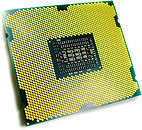qubit
Overclocked quantum bit
- Joined
- Dec 6, 2007
- Messages
- 17,865 (2.81/day)
- Location
- Quantum Well UK
| System Name | Quantumville™ |
|---|---|
| Processor | Intel Core i7-2700K @ 4GHz |
| Motherboard | Asus P8Z68-V PRO/GEN3 |
| Cooling | Noctua NH-D14 |
| Memory | 16GB (2 x 8GB Corsair Vengeance Black DDR3 PC3-12800 C9 1600MHz) |
| Video Card(s) | MSI RTX 2080 SUPER Gaming X Trio |
| Storage | Samsung 850 Pro 256GB | WD Black 4TB | WD Blue 6TB |
| Display(s) | ASUS ROG Strix XG27UQR (4K, 144Hz, G-SYNC compatible) | Asus MG28UQ (4K, 60Hz, FreeSync compatible) |
| Case | Cooler Master HAF 922 |
| Audio Device(s) | Creative Sound Blaster X-Fi Fatal1ty PCIe |
| Power Supply | Corsair AX1600i |
| Mouse | Microsoft Intellimouse Pro - Black Shadow |
| Keyboard | Yes |
| Software | Windows 10 Pro 64-bit |
The latest Sandy Bridge-E 6 core processors have just been released, to excellent reviews. However, the architecture is designed for 8 cores, so these current i7-3960X & i7-3930K processors actually contain those 8 cores, but with two turned off in order to enable them to fit within a manageable 130 W power envelope. Hence there's quite a bit more potential to be released and soon. Therefore, anyone looking to invest in the premium-priced SB-E platform right now, should note that these processors are at the initial C1 stepping and have the VT-d hardware virtualization issue and PCI-E 3.0 compatibility uncertainty. The VT-d problem will be a real show stopper where hardware acceleration of a virtual machine is a must, so it shouldn't be ignored.
VR-ZONE brings us news that the fully unlocked SB-E 8 core chips will be released as the long awaited Xeon E5 family of processors, which will be built on the C2 stepping, solving the above issues. However, being 8 core, these will be very power hungry indeed, consuming around 150 W at just 3 GHz with all 8 cores active and 20 MB of L3 cache. At 2.5 GHz though, the new processors are expected to fit within the 95 W power envelope.


Being "Xeon" processors, they are primarily intended to be used in multi-socket configurations in servers and very high end desktops for businesses that need this kind of raw power. Of course, the other market that these E5 processors are aimed at, are the hardcore PC enthusiasts who have very deep pockets and want the ultimate power in their desktops at any price. It's rumoured that such people might be using these powerhouse systems for more than just playing Sudoku, doing a bit of word processing and browsing the internet, but these are unconfirmed at the time of publication.
Later on in 2012, Ivy Bridge-E is expected to be released, which will be an optical shrink of SB-E, while also using Intel's new 22 nm tri-gate transistors. This will bring significant performance improvements, including an increase to 10 cores and 25 MB L3 cache. TechPowerUp has more details on this generation, here. So, with these new high wattage processors eventually becoming more mainstream, could we see the return of the ill-fated BTX (Balanced Technology Extended) form factor case, introduced by Intel around seven years ago? Only time will tell.
For more detail on these SB-E & IB-E processors, hop on over to VR-ZONE.
View at TechPowerUp Main Site
VR-ZONE brings us news that the fully unlocked SB-E 8 core chips will be released as the long awaited Xeon E5 family of processors, which will be built on the C2 stepping, solving the above issues. However, being 8 core, these will be very power hungry indeed, consuming around 150 W at just 3 GHz with all 8 cores active and 20 MB of L3 cache. At 2.5 GHz though, the new processors are expected to fit within the 95 W power envelope.


Being "Xeon" processors, they are primarily intended to be used in multi-socket configurations in servers and very high end desktops for businesses that need this kind of raw power. Of course, the other market that these E5 processors are aimed at, are the hardcore PC enthusiasts who have very deep pockets and want the ultimate power in their desktops at any price. It's rumoured that such people might be using these powerhouse systems for more than just playing Sudoku, doing a bit of word processing and browsing the internet, but these are unconfirmed at the time of publication.
Later on in 2012, Ivy Bridge-E is expected to be released, which will be an optical shrink of SB-E, while also using Intel's new 22 nm tri-gate transistors. This will bring significant performance improvements, including an increase to 10 cores and 25 MB L3 cache. TechPowerUp has more details on this generation, here. So, with these new high wattage processors eventually becoming more mainstream, could we see the return of the ill-fated BTX (Balanced Technology Extended) form factor case, introduced by Intel around seven years ago? Only time will tell.
For more detail on these SB-E & IB-E processors, hop on over to VR-ZONE.
View at TechPowerUp Main Site
Last edited:





